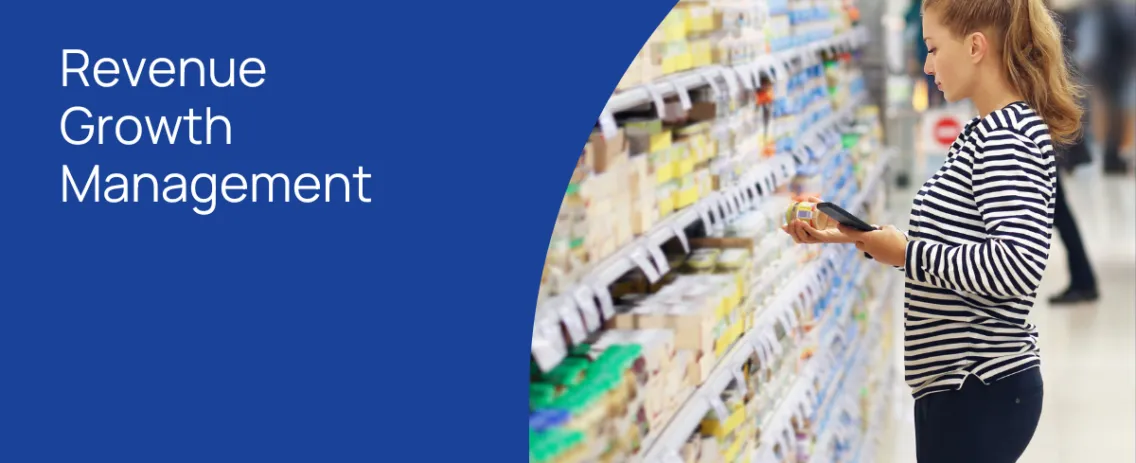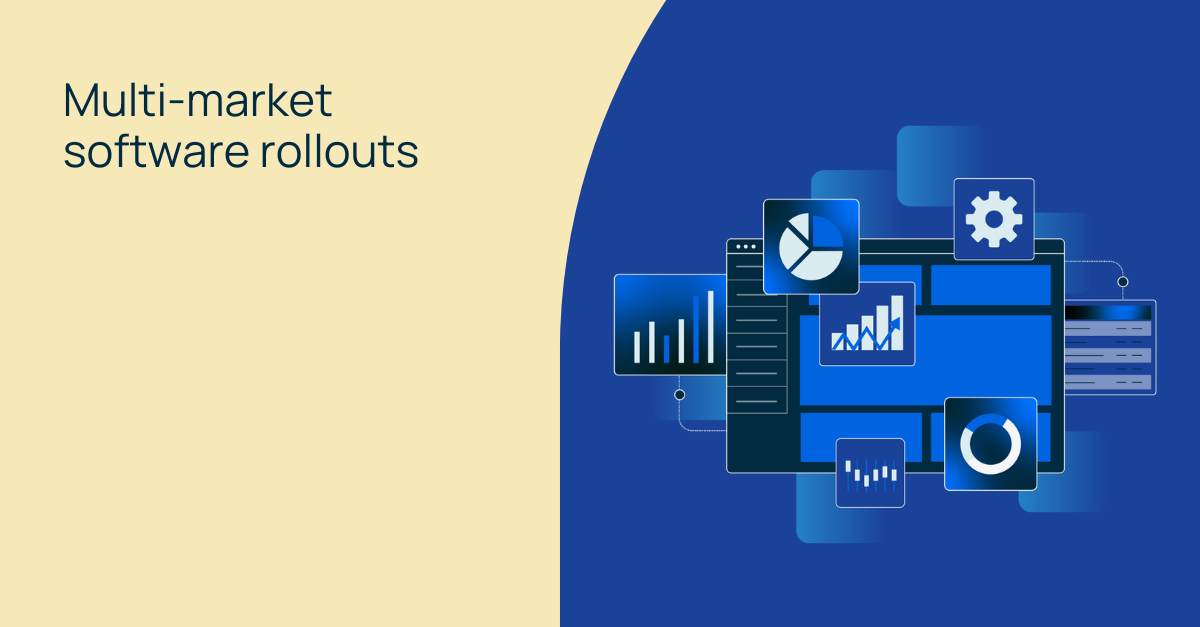
What is Revenue Growth Management in CPG?
Every business wants to increase revenues. But for consumer-packaged goods (CPG) companies there’s a big difference between ramping up sales at all costs, and achieving sustainable growth. Revenue growth management is vital in CPG as it benefits the manufacturer, its retail partners, and their consumers.
CPG firms face considerable challenges in achieving sustainable top line growth. Their supply chains are long and complex. A typical CPG manufacturer will have many individual brands. And these will be offered in a variety of formats and packaging, at different price points. The retail landscape is also incredibly diverse – with a range of consumers buying from convenience stores, supermarkets, and big box retailers, across multiple geographies. That’s a lot to get right.
The current economic climate makes life even more complicated. Manufacturers face rising materials and energy costs as well as supply chain disruption. Those same factors are contributing to rising inflation rippling throughout the economy. Consumers are acutely sensitive about pricing, while retailers are extremely protective of their profit margins.
This is why more and more firms are embracing a modern revenue growth management (RGM) approach. What is revenue growth management? Put simply, RGM is the discipline of driving sustainable revenue growth through the methodical and holistic management of all the functions at the manufacturer’s command, including promotions, pricing, assortment, and trade investment.
In this article we will examine the benefits CPG companies, and their various teams, can reap through effective revenue growth management. We’ll also address the challenges they face in implementing RGM and highlight how an integrated software approach can overcome these.
The benefits of revenue growth management in the CPG industry
As we’ve seen, the retail and consumer environment for CPG firms is complex. But a CPG manufacturer’s own internal landscape is incredibly diverse too. A variety of distinct functions and teams all contribute to revenue growth. These range from demand forecasters and marketers to sales teams and trade promotions professionals.
Each has a critical role to play, and they are often complementary. But it’s all too easy for different functions to operate as individual silos, working to different objectives, often relying on different data and tooling, and even pulling against each other.
By taking a revenue growth management approach, CPG manufacturers aim to bring different teams’ tactics and strategies together under a comprehensive commercial plan aimed at securing sustainable and profitable growth.
RGM is often conceptualized as spanning five pillars, namely: promotion management; pricing; trade spend; commercial planning; and assortment/mix optimization.
When all these functions are working together in harmony, with a common objective, and a shared version of “the truth”, it becomes easier to plan and review the impact of promotions and other activities. It is then easier to optimize them, and to spot growth opportunities in the short or longer term.
It also makes it easier to fine-tune and coordinate budgets and spending to ensure trade spend and promotions are more efficient and deliver the biggest possible impact.
This results in improved revenue forecasting and optimization. Which in turn leads to more sustainable revenue growth both in the short and long term. That doesn’t just mean hitting targets, but meeting them in a predictable way, with different functions – and their spending – operating together to deliver the maximum possible benefit.

What does each CPG team need for revenue growth management implementation?
It’s easy to say that different units within a CPG manufacturer have different roles to play when implementing revenue growth management. But what does that that look like in practice? And what might be holding them back from playing their part?
Sales
Sales teams want to achieve results, and they want to build the commercial relationships that will help them achieve these. But this is about much more than building rapport with retail partners. It’s about developing a strategy for growth that encompasses trade promotions, pricing optimization, and trade investments.
In today’s market, this needs to be data-driven. Executives need quick access to diverse information sources and actionable insights into pricing and promotion activities. This enables them to optimize current programs, develop accurate forecasts, and create innovative plans for the future. To achieve this efficiently, they require workflows that provide necessary approvals without causing delays.
Marketing
Marketing events and activations are critical to revenue growth management. Creativity and innovation are part of this, but so is building and maintaining the trust of both consumers and retailers.
Marketing teams need efficient workflows that allow them to gain approvals quickly and track activations and campaigns over time. It’s crucial that their activities are synchronized with other teams to avoid potential issues. For example, a creative campaign could fail if there isn’t enough stock in stores, and a campaign that doesn’t align with trade promotion activities can undermine both efforts.
This all requires precise planning, careful budgeting, and efficient procurement. So, again, accurate information is essential.
Finance
CPG is a complex and fast-moving business, and for the finance team, just keeping up isn’t enough. It must keep ahead of things, if the organization is going to implement revenue growth management successfully.
Creating up-to-date estimates and forecasts, as well as analyzing investment and pricing strategies, requires handling a vast array of data from multiple departments, often in different applications and formats. For finance to provide an accurate picture to senior management and beyond, it must have a comprehensive understanding of all activities within the company and the market.
Demand teams
Revenue growth management can’t be a guessing game. Demand teams need to be able to create accurate baselines and statistically sound forecasts.
The onset of AI has raised the bar when it comes to modeling data. It can effectively free up forecasters, and their colleagues, to focus on exceptions and outliers. But that assumes demand teams are working with accurate historical and up-to-the-minute data. They must have clear insight into the activities that underpinned results in the past, and those that are likely to shape the business in the future. And they must have the right tooling to make the most of the data.
IT
Each team needs different tools to carry out their roles, but they all rely on timely, accurate data. The IT team is central to a CPG organization’s ability to implement revenue growth management.
If technology can provide a unified solution that seamlessly integrates data from various sources, it can eliminate silos and free individual teams from relying on custom spreadsheets, stand-alone tools, and time-consuming manual processes. This software can also offer the specific configurations and workflows each team requires, while ensuring that upgrades and new features are implemented smoothly.

How does shared software enable revenue growth management?
Revenue growth management holds the promise of predictable, sustainable revenue growth.
However, there are all too obvious barriers to achieving this. Each team’s contribution and influence on the overall plan, as well as their required data and tooling will be subtly different. Often, they will evolve bespoke spreadsheets to underpin their functions.
Just getting information into legacy tools can be a challenge. Automated data integration might not be possible. Manual processes are time consuming and can mean mistakes.
When data lands in silos or stand-alone applications it can become stale. Teams might not have the most appropriate tools to analyze it. Worst of all, changes and insights may be locked in individual departments and not shared with the organization at large. This undermines efficiency, and the reliability of forecasts.
By opting for Visualfabriq’s software, CPG manufacturers can give their key teams the tools and workflows they need, along with the common data to power them, in a single software solution. Individual teams can coordinate and optimize their activities, for mutual benefit and maximum impact.
Demand forecasters and sales teams alike can use cutting-edge AI to analyze and model data. It will enable them to produce more accurate forecasts, gauge the impact of trade spend, and unlock opportunities for innovation or growth. Marketing teams can ensure their activities are aligned with sales teams’ programs and speed up the approval process.
RGM and finance specialists will gain a comprehensive view of the numerous activities and programs within their organization. This holistic perspective ensures that the pursuit of sustainable growth is embedded in every fiber of the organization – and that all of these are pulling in the same direction.
Takeaways
There’s a cultural aspect to revenue growth management in the CPG world. Each team needs to understand its role, and its contribution to delivering sustainable growth, as well as the importance of working with their peers and their partners in retail to achieve this.
This becomes much simpler when everyone uses software that supports the essential processes and teams involved in RGM. Such a solution ensures that they work with and share common data, delivering insights instead of questions. No matter where they are in the organization.
Would you like to see how Visualfabriq can enable you to implement CPG revenue growth management software which will delight all your stakeholders? Book a demo today.


.png)
.png)